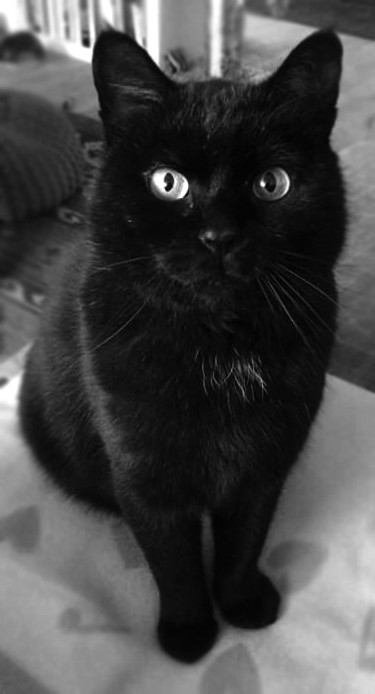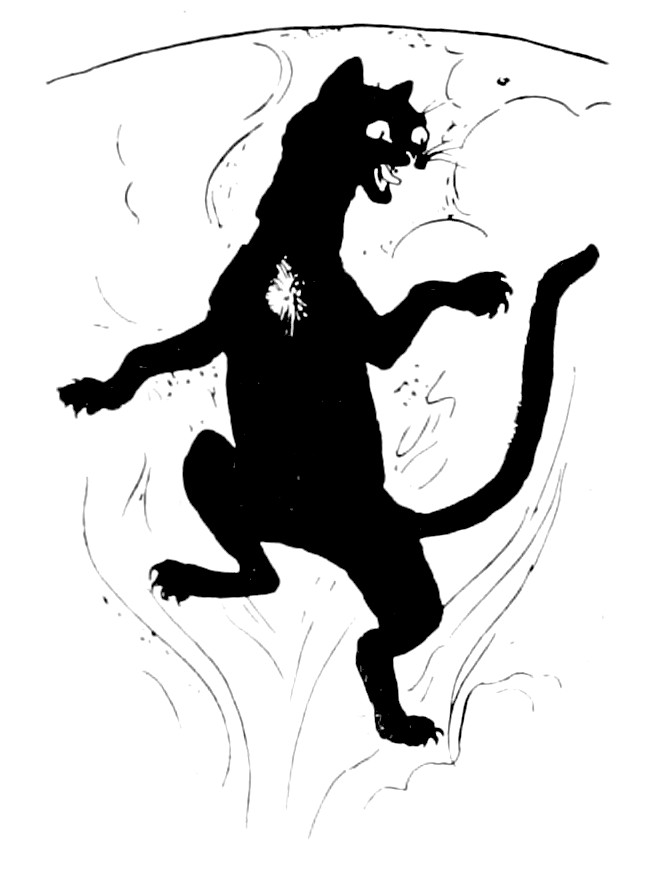Black cats have long been shrouded in mystique, often unfairly associated with bad luck and superstition. This perception, unfortunately, has ancient roots, with myths persisting even today. While many imagine a sleek, completely black feline when they think of a black cat, a charming variation exists: black cats adorned with patches of white. These bicolor beauties are not uncommon, and their contrasting markings carry their own intriguing stories and symbolism.
 Zero_zw
Zero_zw
Interestingly, the symbolism surrounding black cats is not universally negative. In Britain and Japan, for example, they are actually seen as symbols of good fortune. This duality in perception adds another layer of fascination to these enigmatic creatures, especially when considering those with white markings.
Many owners of Black Cats With White spots have observed this pattern and wondered about its significance. It turns out there’s a charming, albeit folkloric, explanation for these white patches, often referred to as “God’s Thumbprint” or “Angel’s Kiss”.
The Legend of “God’s Thumbprint” on Black Cats
The tale of “God’s Thumbprint” or “Angel’s Kiss” on black cats emerges from a dark period in history – the medieval witch hunts. During this era, women believed to possess magical abilities were persecuted, and tragically, their feline companions often suffered the same fate. Black cats, in particular, became symbols of witchcraft and were frequently associated with evil.
However, folklore suggests a glimmer of hope for black cats bearing white markings. It was believed that a black cat with even a small white spot was marked by God or an angel, offering them protection from the flames. This “divine” marking supposedly spared them from being burned alongside those accused of witchcraft. This grim “unnatural selection” process, as the story goes, might explain why we see many black cats today with at least a touch of white, while completely black cats were less likely to survive during those times, at least in folklore.
Black Cat Superstitions: A Double-Edged Sword
The history of black cats is deeply intertwined with human superstition. Their dark fur has, for centuries, evoked strong reactions, often fear and mistrust. This unfortunate association has led to the persecution of countless black cats throughout history.
In many parts of mainland Europe, particularly during the Middle Ages, black cats were linked to the devil himself. Certain dates, like the Feast of St. John (June 24th), were especially perilous for these felines. During this time, black cats were often rounded up and burned alive in bonfires, fueled by the belief that witches gathered on this night and could transform into cats. The Church, unfortunately, propagated these beliefs, further demonizing black cats as agents of evil.
However, it’s crucial to remember that the symbolism of black cats isn’t universally negative. As mentioned earlier, in some cultures, they are considered lucky. This contrasting symbolism highlights the complex and often contradictory nature of folklore surrounding these animals.
Cat Sìth: The Mythical Black Cat with a White Spot
Adding another layer to the mystique of black cats with white markings is the legend of the Cat Sìth (also spelled Cat Sidhe). This creature from Celtic mythology is described as a fairy being resembling a large black cat, distinctively marked with a white spot on its chest. The Cat Sìth is said to haunt the Scottish Highlands, and legends surrounding it are prevalent in Scottish folklore, with some echoes in Irish tales as well.
 Cat_Sidhe
Cat_Sidhe
Some folklore even suggested that the Cat Sìth wasn’t a fairy at all, but rather a witch capable of transforming into a cat, and could do so nine times. The origins of the Cat Sìth myth may be rooted in the Scottish wildcat or the Kellas cat, a hybrid feline found in Scotland resembling a large black wildcat but with domestic cat features. These Kellas cats have likely roamed Scotland for centuries, potentially inspiring the legends of the Cat Sìth.
Appearance and Soul-Stealing Beliefs
The Cat Sìth is consistently described as entirely black except for a white spot on its chest. Its size is often exaggerated to be as large as a dog, and it’s depicted with an arched back and raised fur, adding to its imposing and supernatural presence.
Highlanders held a deep distrust of the Cat Sìth, believing it possessed the power to steal a person’s soul before it could be claimed by the gods after death. To prevent this, “Feill Fadalach” (Late Wake) watches were held, day and night, to keep the Cat Sìth away from a corpse before burial. Games, catnip, riddles, and music were used as distractions. Notably, fires were avoided in rooms where a body lay, as legend claimed the Cat Sìth was drawn to warmth.
A sleek black cat with a subtle white marking, showcasing the beautiful variations in patterns found in black cats with white.
In a lighter, more contemporary vein, stories of black cats with white markings continue to capture our attention. Anecdotes of black cats seemingly defying death, like one recently reported on social media about a black cat with a white spot returning home after being presumed buried, further contribute to their mystique and resilience in popular culture.
 Black_cat_dead
Black_cat_dead
In conclusion, black cats with white markings are more than just a color variation; they are living embodiments of rich folklore, superstition, and enduring fascination. Whether viewed as touched by angels, linked to mythical creatures, or simply unique and beautiful companions, these bicolor felines hold a special place in our hearts and stories.

